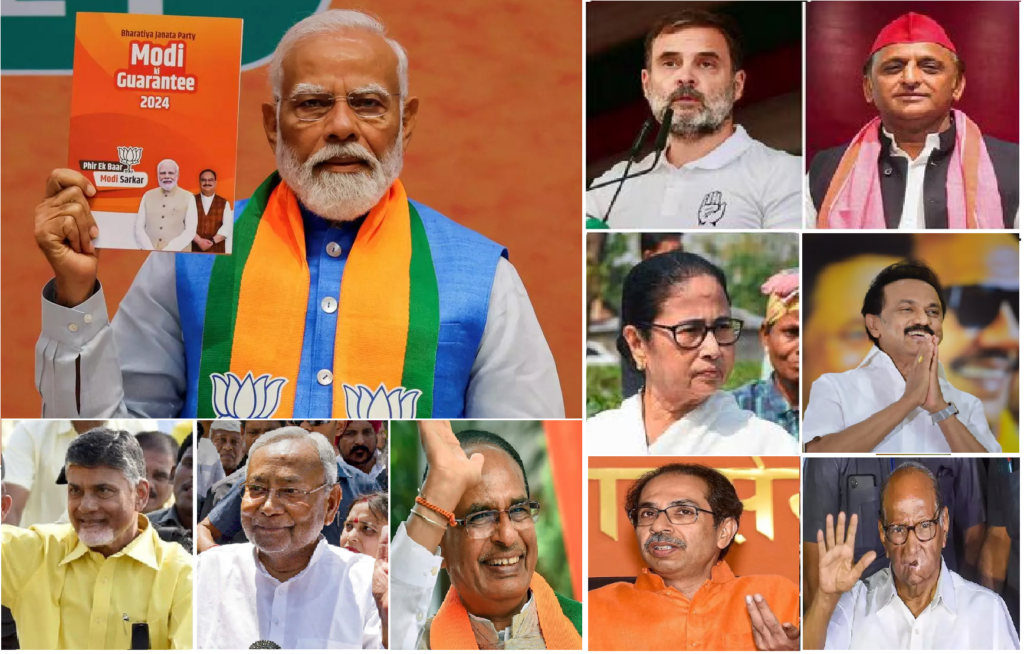
- Though we foresee Modi 3.0 will continue to govern the country, the third term will face many challenges.
- Apart from the obstacles posed by the opposition, Modi 3.0 will have to constantly please its NDA allies who are now more crucial than ever before and would want their share of the pie.
- The massive resurgence of the INDI Alliance is seen as a result of smart vote bank strategies, vote consolidation and the establishment of strong connections with the people on the ground.
- The Bharat Jodo yatra was a prime example of the ground connection that seems to have paid off for the Congress and the INDI Alliance.
2024 is a much anticipated year as it is an election year for some of the biggest countries in the world namely the USA, EU, Mexico, India, and South Africa among others. After South Africa and Mexico, it was time for India and we now have the results after the counting on 4th March.
India is the largest democracy in the world and the 2024 general election was the biggest democratic exercise in the world with about a hundred crore voters. The BJP-led NDA has secured a majority by winning 291 seats out of 543 Lok Sabha whereas the opposition that is the INDI Alliance has secured a total of 234 seats, while 18 seats were secured by non-alliance parties and independent candidates. This likely will mean that Narendra Modi will remain as the prime minister to serve his 3rd term and the NDA should be forming the government for the third consecutive time which in itself is a record.
Modi coming back to power was an expected outcome but it will not be wrong to say that this was one of the most shocking election results that the country has seen. However, there were many unexpected results and numbers in several constituencies. Almost all exit polls had predicted a comfortable number of more than 350 seats for the NDA, which is why the final results where the NDA alliance was short of 300 shocked everyone. Yet another upset for the NDA was the fact that the INDI alliance who were expected to get about 150 seats ended up winning a whopping 234 seats which is a massive outcome for the opposition. This shows how even after winning the elections, the NDA is far from its goal of attaining a decisive majority as they have fallen short by a huge margin.
If we look into the individual seats of the members of the National Democratic Alliance, the BJP has won 240 seats on its own. While this is a remarkable achievement in itself, the BJP won 303 seats on its own in the 2019 elections. The Nitish Kumar-led Janata Dal United has secured 12 seats, the Chandra Babu Naidu-led Telugu Desam Party has won 16 seats, the Shiv Sena has won 7 seats, LJP has won 5 seats, JDS has won 2, JnP has won 2 among others.
On the other hand, the INDI alliance has won 234 seats out of which 99 seats were secured by the Indian National Congress, SP has 37 seats, TMC led by Mamta Banerjee won 29 seats, DMK secured 22 seats, SS UBT secured 9 seats among others. The massive resurgence of the INDI alliance is being seen as a result of smart vote bank strategies, vote consolidation and the establishment of strong connections with the people on the ground. The Bharat Jodo yatra was a prime example of the ground connection that seems to have paid off.
The INDI alliance will try to convince the JDU and TDP to join the alliance and try to form the government, although this seems unlikely. The famous saying that if one wants to win big in India then he has to win Uttar Pradesh has been proved once again in this election as the votes were split among BJP, SP and other INDI alliance partners which has led to a huge loss in the number of seats for the BJP. The NDA stayed strong in Rajasthan, Odisha, Andhra Pradesh, Telangana, Karnataka, Gujarat, Madhya Pradesh and Bihar. On the other hand, the INDI alliance has performed well in states like Uttar Pradesh, West Bengal, Tamil Nadu, Kerala, and Punjab and managed to win a few seats in the BJP-dominant states which have added up to be a significant number.
In conclusion, we can foresee a Modi-led government that will continue to govern the country but the third term will face many challenges. Apart from the obstacles posed by opposition, Modi 3.0 will have to constantly please its NDA allies who now are more significant than ever before and would want their share of the pie. One expects this term to be different from the previous terms as it’s no more a ‘BJP government’ but an ‘NDA government’ and this makes all the difference.
(The views and opinions expressed are the author’s own)
